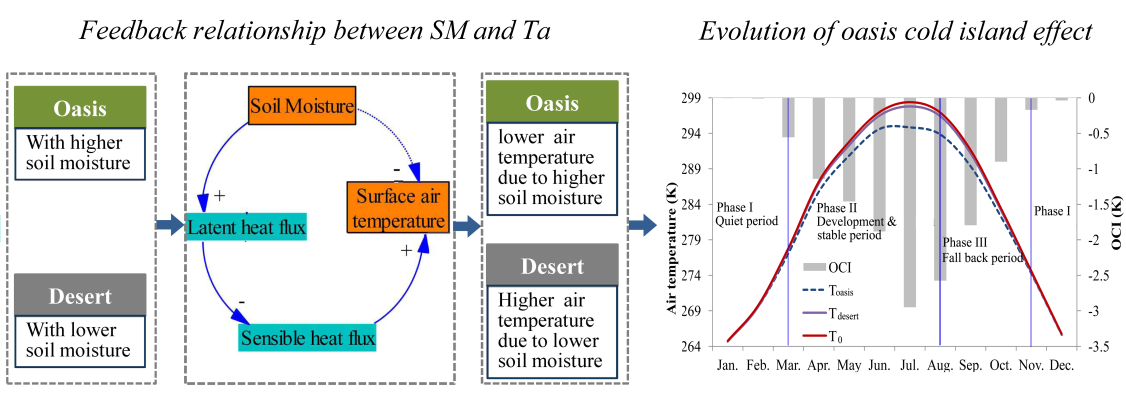Research Found Variation of Soil Moisture Is the Main Reason for Intensification of Oasis's Cooling Effect
2021-11-16
Researchers from Xinjiang Institute of Ecology and Geography, Chinese Academy of Sciences, have found that the change of soil moisture is the main reason for the intensification of oasis cold island effect.

The findings were published in Hydrological Processes, entitled "Soil moisture controlled the variability of air temperature and oasis effect in a large inland basin in arid region".
Soil moisture plays significant role in land-atmosphere interactions. Changing fractions of latent and sensible heat fluxes caused by soil moisture variations can affect near-surface air temperature, thus influencing the oasis' cooling effect in arid regions.
In this study, the framework for the evaporative fraction (EF) dependence on soil moisture is used to analyze the impacts of soil moisture variation on near-surface air temperature and the oasis effect.
Results showed the sensitivity coefficients of temperature to EF and EF to soil water were the highest in summer, and the highest in oasis area. The contribution rate of soil moisture to EF was significantly higher than that of EF to air temperature.
Soil moisture has a negative influence on air temperature, accounting for 41% ~ 82% of the total area. This influence leads to the difference of air temperature between oasis and desert areas, and further promotes the Oasis’s cooling effect.
The mean maximum temperature variation caused by soil moisture was 0.386 K, which accounted for 57.99% of the total temperature variation. The contribution rate of soil moisture to temperature change was 24.6%, 60% and 4.9% in mountainous area, oasis and plain desert area respectively. The high contribution of soil moisture to temperature change was mainly caused by high transpiration of vegetation in oasis area. The average contribution rate of crop transpiration to temperature variation in summer oasis was 53.99%. Aksu Oasis had the highest contribution rate of 55.25%, and Korla Oasis had the lowest contribution rate of 52.04%.In contrast, the average contribution of soil evaporation to temperature variability was only 9.40%.
The study was funded by the National Natural Science Foundation of China and the Strategic Priority Research Program of Chinese Academy of Sciences.
Article link: https://onlinelibrary.wiley.com/doi/10.1002/hyp.14246

Contact: LIU Jie, Xinjiang Institute of Ecology and Geography
E-mail: liujie@ms.xjb.ac.cn



